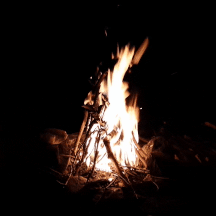<p >Israeli aircraft targeted the bunker of Iranian President Masoud Pezeshkian on June 16, according to a report by the Iranian state-affiliated media outlet Fars. The president was slightly injured in the attack, which was part of a broader air campaign launched against the country from June 13-24. Six bombs of unknown size targeted access points to a secret underground facility in western Tehran, where the president and other senior officials were attending a meeting of Iran’s Supreme National Security Council. The bombs cut power to the facility, forcing the president to flee through an emergency shaft which injured his legs. According to the local outlet, the failed attack appeared to have been modelled on a <a href="https://militarywatchmagazine.com/article/israeli-f15s-80000kgs-nasrallah" >strike which killed </a>Hezbollah leader Secretary General Hassan Nasrallah in Beirut in September 2024.&nbsp;</p><p ><img src="https://militarywatchmagazine.com/m/articles/2025/07/15/article_687669dc83c043_43540682.png" title="Aftermath of Israeli F-15 Bombing of Hezbollah Bunker in Beirut "></p><p >Claims of commonality between the operations targeting Tehran and Beirut remain questionable, since the latter attack saw multiple apartment buildings levelled and over 300 people killed after F-15 fighters dropped over 80,000 kilograms of explosives to penetrate a bunker. Similar attacks against fortifications in Iranian population centres are not considered viable due to the much greater capabilities of <a href="https://militarywatchmagazine.com/article/iran-top-air-defence-bavar373-f35-shootdowns" target="_blank">air defences in place</a>. Israel has been able to launch penetration bombings deep inside Iranian airspace, but only using <a href="https://militarywatchmagazine.com/article/custom-built-specifically-war-iran-modified-israel-f35i" target="_blank">F-35I fifth generation fighters</a> with advanced stealth capabilities. These aircraft are fielded in only limited numbers, and are much lighter than the F-15s used to target Hezbollah’s leadership, while being further constrained by the need to carry their bombs in limited internal weapons bays when in stealth configuration.&nbsp;</p><p ><img src="https://militarywatchmagazine.com/m/articles/2025/07/15/article_687669b76c7359_21826394.jpeg" title="Israeli Air Force F-35I" ></p><p >Every when configured for stealth, operating deep inside Iranian territory remains highly dangerous for F-35 units, with four of the aircraft reported to <a href="https://militarywatchmagazine.com/article/iran-claims-shootdown-fourth-israeli-f35-deep" >have been shot down</a> during the two countries’ 11 days of hostilities. Should claims be Iranian sources be true that a major underground complex in Tehran was targeted using bombs, rather than missiles, it is highly likely that F-35s were responsible, as Israel fields no other aircraft with comparable survivability for such penetration missions. A primary weakness of Iranian defences remains the country’s lack of modern fighter aircraft, with its predominantly Vietnam War era fleet considered long since obsolete, placing a heavy burden on the country’s more modern <a href="https://militarywatchmagazine.com/article/iran-top-air-defence-bavar373-f35-shootdowns" >ground-based air defence</a> network. Tehran itself was guarded by Iran’s<a href="https://militarywatchmagazine.com/article/iran-wanted-soviet-mig29-as-next-primary-fighter-this-is-how-america-stopped-it" target="_blank"> most advanced fighters</a>, MiG-29A/UB early fourth generation combat jets ordered from the Soviet Union in 1989. The capabilities of these fighters are considered overwhelmingly inferior to those of modern MiG-29 variants such as the MiG-29M, and moreso to those of newer fighter classes such as the J-10C or Su-35.&nbsp; The lack of a viable fighter fleet is considered to have been a <a href="https://militarywatchmagazine.com/article/could-su35-j10c-fighters-saved-iran-marine-analyst" >pivotal factor</a> in Tehran’s failure to deter Israel and its supporters in the Western world from initiating hostilities.</p>
